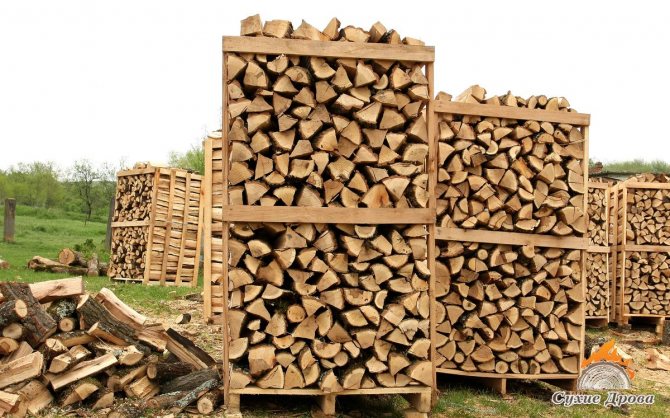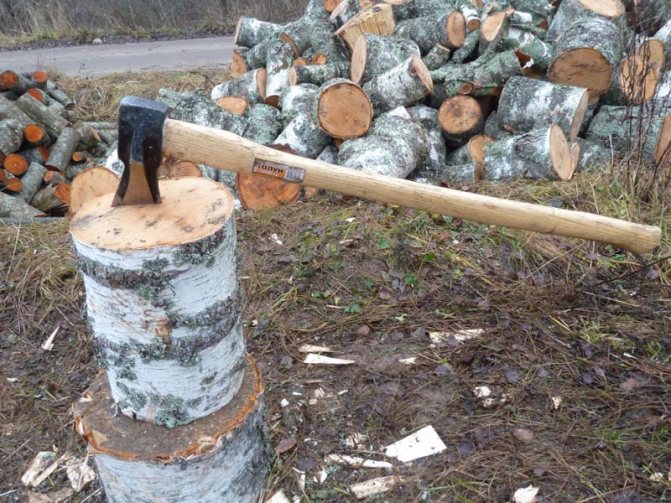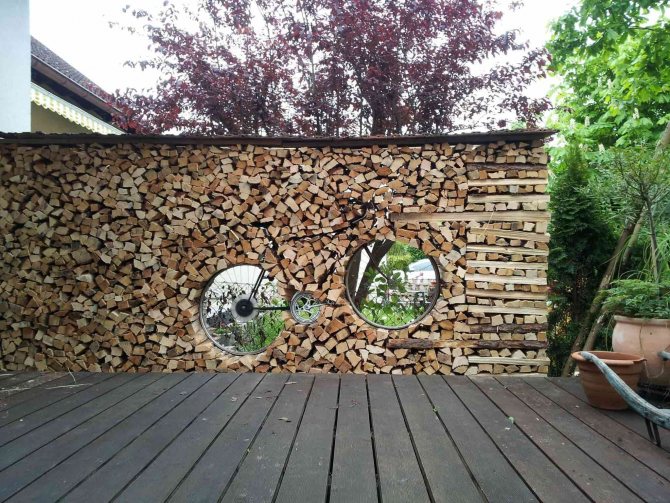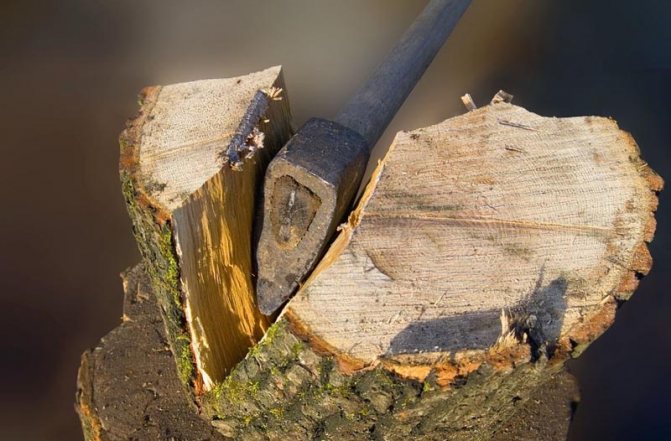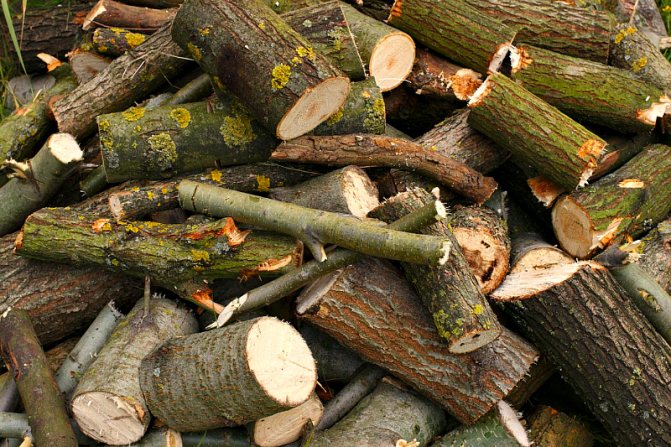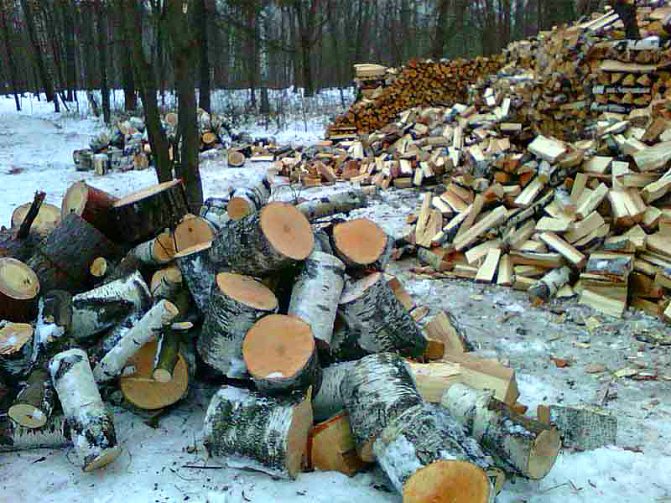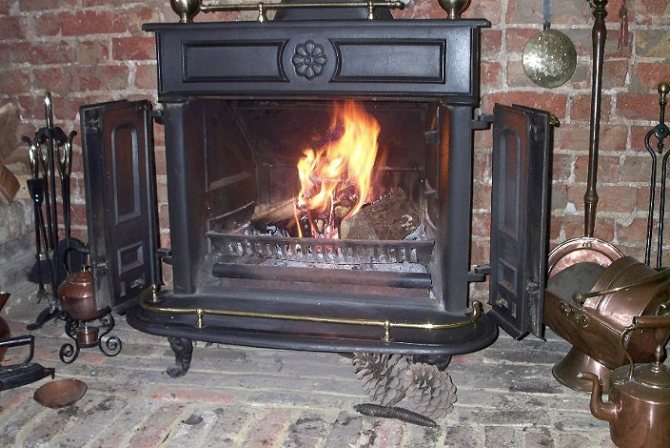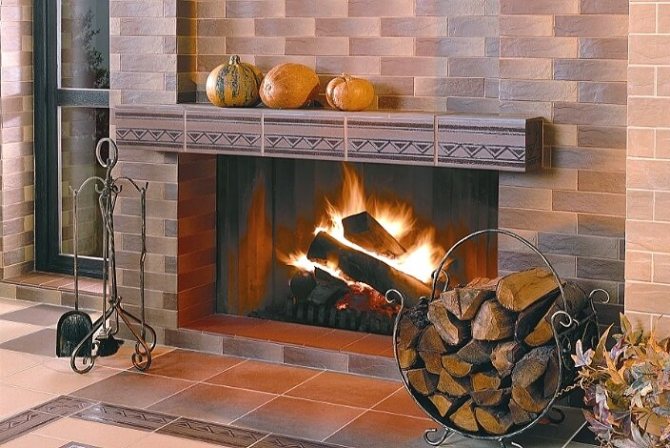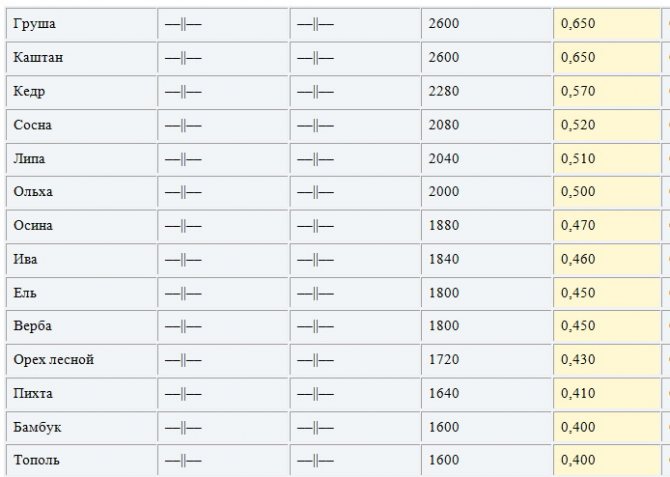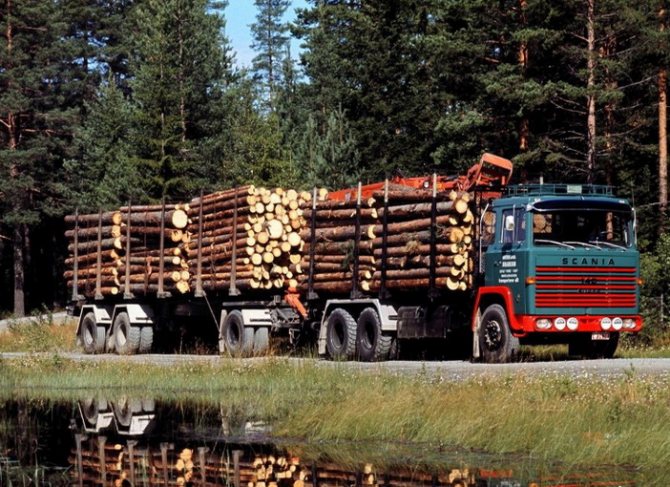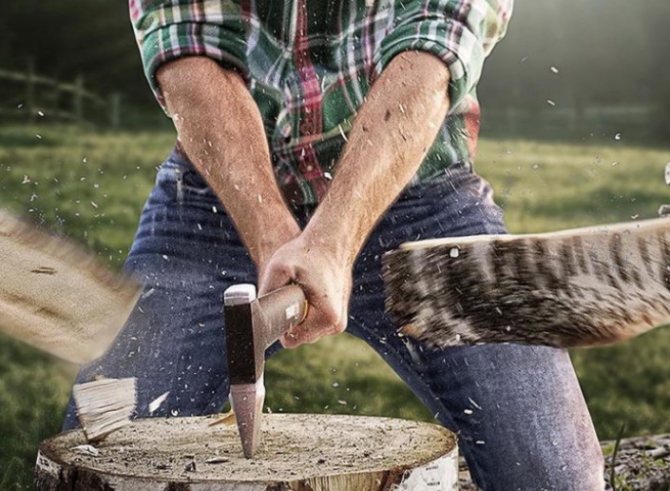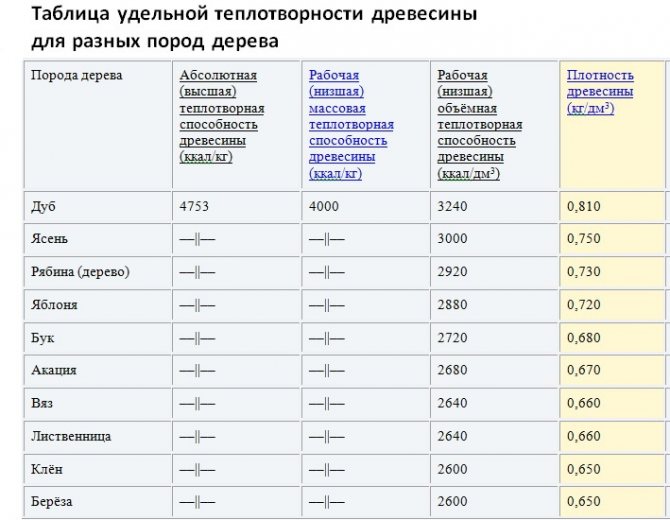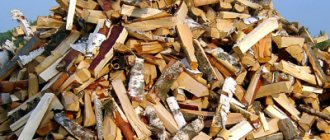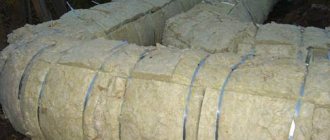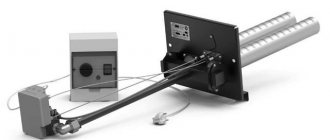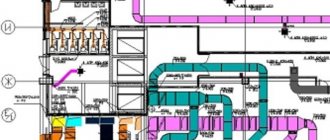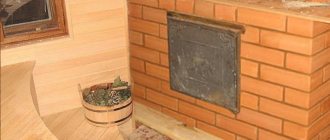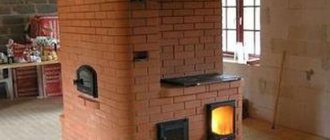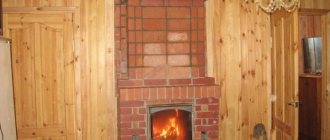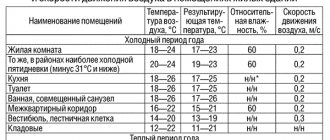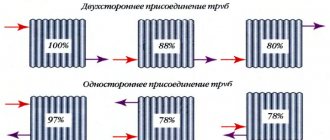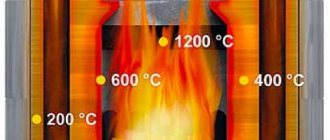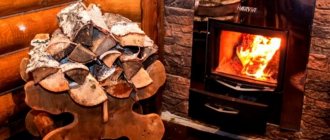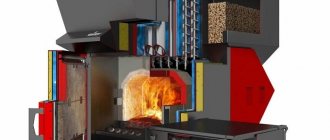Best Answers
Jeanne C:
a neighbor has a house of 6 * 6, that is, 36 square meters, lumber, with an attic, I took 10 cubic meters last year, that is, Kamaz in bulk, barely enough for the winter, that is, you probably have 2 Kamaz. the stove is also butakova, it was always warm in the house.
Mikhalych:
it is easy to calculate from the daily "norm" 80-120 liters per day passport request x for 30 x 8 months = 19 - 29 m3 WAREHOUSE (!) ie folded, not cubed from round timber ...)))))
anaida zagoskina:
A lot depends on the stoves that heat your home. As a rule, such a room cannot be heated with one stove. If you have a baker and a pillbox, that is, two ovens, then 10 cubes will be enough. Heat the baking in the morning, and closer to lunch, a pile or flood. The average temperature will be maintained constantly in the living space. If a good chimney is made in the bakery, then the additional stove can be heated in the evening.
Nikita:
I live in the north, a house of 90 sq. timber 150x150, a brick oven with a home-made water boiler, 10 cubes long (not sawn) are enough for the whole winter + a bath in winter 2 r per week, in summer every day. If you succeed better with this crap, feel free to hand it over to scrap metal.
Sergey Bogatyrev:
house40 m 17 cubes but this is with a margin
How much firewood is required to heat a house
We always look at the quality of the firewood that we buy. Softwood burns quickly, but does not give much heat. Preference is given to hard rocks, which, although they burn slowly, give a lot of heat to the venture. Rotten firewood is often on sale. When you harvest firewood yourself, this will never happen. And most often they sell raw wood.
It turns out that for a private house or summer cottage, it is best to find about 10 cubic meters of firewood per season. In order not to spend money on the purchase of chopped firewood, you can start harvesting them yourself. Moreover, there will always be a forest near the summer cottage, where there is an old fallen tree. A great option for harvesting firewood is to take advantage of the moment when someone is dismantling an old wooden house.
Equipment for preparing firewood for the winter
You cannot prepare a lot of firewood with a hacksaw or an ax. It also takes a lot of effort.
In order to carry out procurement work, you need to buy special tools, of which there are not so many.
In order to cut a tree trunk in the forest, you need to choose a good chainsaw. The best option is a device with a capacity of up to two kilowatts. If the work will be carried out near the house, then there is an option to use an electric saw. There are such types of saws on sale that are equipped with batteries. If the work will be carried out very often, then it is recommended to buy semi-professional saws. Their power is more than two kilowatts, and the price is higher.
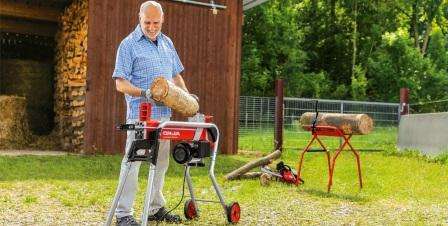
Then, in order to chop wood, you need to buy a high-quality horizontal type log splitter. For the home, this is the best device that works safely. Working with a wood splitter is simple: you need to turn on the device that works on electricity, then put the log, and then wait until the knife separates it.
There will be rubbish after work. And then you need a shredder that can process waste. Slivers, shavings, leaves can be quickly turned into fertilizer for the garden.
If you want to buy quality equipment, you will have to pay a lot of money. However, the tools will last for a long time. After a while, they will pay off in full. For those who believe that buying ready-made firewood is cheaper, they are deeply mistaken. For example, what is it worth only one delivery of ready-made firewood, and then they still need to be stored. Firewood is stored under special sheds or in woodpiles.
Do-it-yourself firewood shed in the country, photo
Sheds for storing firewood in the winter in the country


shed for storing firewood in winter
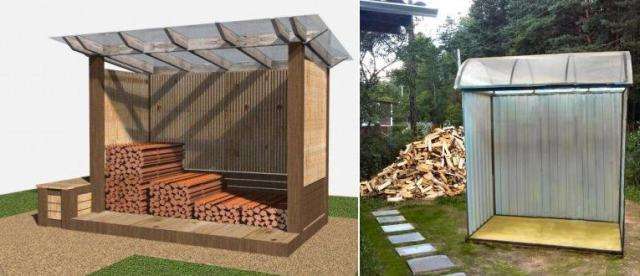

Experts have proven that self-harvesting is much cheaper for the owner, even if he spent a lot of money to buy garden equipment.
When to harvest firewood?
The best time to prepare firewood is the end of autumn and the beginning of winter. Work should be carried out in dry weather. During this period, sap flow stops, and the moisture content of the wood decreases. Lumps are much easier to split into firewood. In addition, it is easier to cut trees without foliage.
The trunks are sawn into lumps, which are then chopped for firewood. They are placed in a ventilated barn until next fall. They will dry out within a year.
© Ilya Vladimirovich
| 2017-10-16 Amateur gardener
Fireplaces and fireplace inserts cost savings, top quality and easy shopping
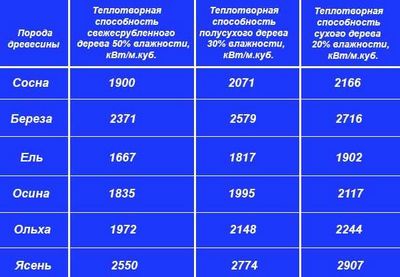

Fireplaces and fireplace inserts for heating - features of selection and use:
When choosing a fireplace, you should understand that it is primarily a heating device. That is why its acquisition should be taken seriously.
It is important to consider what the technical capabilities, purpose and design features of the models you choose are. You also need to remember that fireplace inserts from various manufacturers differ significantly from each other precisely by these indicators.
Despite this, externally, fireplace inserts can be very similar.
How to reduce heating costs at home?
Fireplace inserts can function as heating equipment: be both the main and auxiliary source of heating in the house. But not every fireplace insert can heat the house. Fireplace inserts can be either decorative (with intermittent combustion) or with a heating function (continuous combustion).
Functional fireplace inserts of two types will help to save on heating the house:
- - with air heating;
- - with water heating.
To heat up a water heating system, you need to buy a fireplace with a water circuit. He will perform the work of a solid fuel boiler and a fireplace at the same time. Most often, a water fireplace is used in a system with another heat source, for example, a gas or electric boiler. When the fireplace is in operation, the other source is automatically switched off. A fireplace with a water circuit can also independently heat the whole house. This saves money on heating the house.
The efficiency of a fireplace-based air heating system depends on many factors:
If it is not possible to install a traditional wood-burning fireplace, and the dream of home comfort at the fireplace does not leave you, we suggest buying an electric fireplace with a 3D flame effect. For country houses or cold rooms, stand-alone fireplaces and stoves that do not need finishing are ideal. We can also offer you stoves for baths and saunas.
Checkout the fireplace and order its installation:
You can send us a plan of the house by e-mail, or order a visit of our specialist for measurements on site. We will make you a free commercial offer for a heating system from a fireplace, where all the necessary equipment will be indicated.
A good fireplace can really heat your home quickly. You won't turn a beautiful living room into a boiler room because you don't have to toss wood into the fireplace every hour. Our fireplace inserts allow one firewood to burn for a long time, even up to 12 hours.
You can buy fireplaces, fireplace inserts in Ukraine or other products presented by us by ordering it by phone or through the online store. In all cities of Ukraine we carry out delivery by transport service.
Our main advantages:
- - an individual approach.
- - only quality goods.
- - direct deliveries from the manufacturer.
- - official manufacturer's warranty up to 10 years.
- - the shortest terms of delivery and installation.
- - democratic prices for fireplace inserts.
How much will wood heating cost
On average, for heating a house with wood, the cost is calculated as follows: the price of 1 kW / hour is 0.7 rubles, which is about 3 times cheaper than using electricity. On average, about 70,000 rubles are spent for 1 heating season, that is, about 10,000 rubles per month. The calculations are approximate, but already from them it is possible to determine in advance whether this method of heating is beneficial for the household.
Fuel is usually purchased in advance, and it is more profitable to immediately purchase a large batch, designed for several years. In rural areas, buying firewood is usually not difficult, in some areas there is still the possibility of self-procurement.
When calculating, you need to take into account the possibility of a colder winter than usual: the weather in Russia is completely unpredictable, and depending on meteorological factors, the consumption of firewood changes significantly. This is another reason to buy firewood in advance: if there is fuel left, it will be possible to buy less next year, and if the winter is very cold, there will be no problems with a lack of fuel.
With all the pros and cons, wood heating remains a very profitable solution for many areas. It is difficult to find a more affordable and reliable fuel that will save the house even from the most severe cold weather and at the same time not depend on any centralized networks. Wood heating is gaining popularity in Europe today, as mankind is trying to return to renewable energy sources using more modern energy-saving technology.
Egor Kondratyuk
Author of publications on 1Drevo.ru with themes: Rounded log houses | Rounded log house | Gas boiler for home | Cylinder garage | Choosing an electric boiler | Polycarbonate canopy | Clapboard decoration | Plinth finishing | Shrinkage blockhouse | External insulation | House of cedar | Profiled timber | Wooden fence | Finnish log house | Roof installation | Shallow foundation, etc.
Was this publication helpful to you?
Save your bookmark on social networks!
Total score: 5 Voted: 17
Modern wood-burning stoves for home heating: which one to choose
Stoves for hot water heating in a private house
Recommended! - Encyclopedia of Wooden Houses - NEW
You can find out detailed and expanded information on the topic of the article from the book "Wooden Houses", which reflects all the stages of building a house, from laying the foundation and ending with the installation of the roof. Book price = 77 rubles.
You may also be interested in other BOOKS on the construction of wooden houses with your own hands.
We recommend more posts on this topic:
Heating a private house with infrared heaters
Electric double-circuit boiler for heating a private house
Solid fuel heating boiler for long burning
How to make ventilation in the kitchen and bathroom of a house from a bar
Solid fuel heating boilers for a private house
Do-it-yourself water stove heating of a private house
Which firewood is better
Wood, which serves as a raw material for firewood, is far from the same in its properties.
Hard tree species such as birch, oak, hornbeam, beech, yew burn hotter, have a high fiber density, and burn more slowly.
Soft varieties have their advantages, for example: aspen, gives less heat than birch by 25%, but it perfectly maintains the heat in a melted oven. Alder also shares a delicious aroma, as do the conifers. Alder and aspen added to the stove at the end of the heating process remove soot deposits and soot in the chimney. But the formation of plaque, which can lead to clogging of the chimney, occurs when essential oils and resin of pine, fir, spruce are burned.Conifers are also inferior in calorific value to birch and oak, but they dry out faster and are more suitable for kindling. Only fir sparkles strongly, and larch at the end of combustion emits a lot of carbon monoxide and you need to be more careful with the damper.
Some types of fruit trees are medium-hard and have an average calorific value. They burn, emitting an aroma, they are easy to harvest, since firewood can be chopped without much effort.
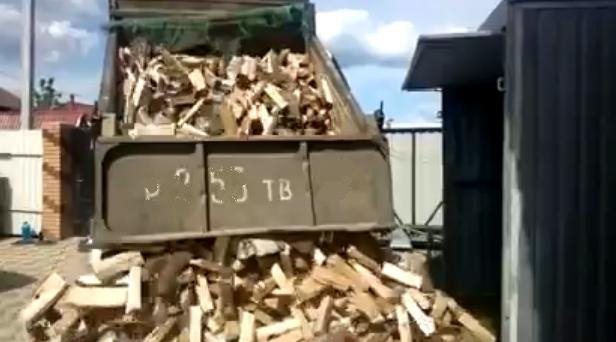

Based on the above, it is difficult to advise any one type of wood for stove or fireplace firewood. As fuel - the most rational are hard deciduous tree varieties. Smooth flame, high heat output, less soot, ash. But the scent of conifers has a therapeutic effect, and is well suited to ignite. By combining several varieties, it is possible to maintain both the working condition of the chimney, the stove, and a comfortable microclimate during the entire cold period, subject to the initial investment in a good one. Otherwise, any heat, along with your funds, will fly into the pipe, evaporate through the cracks.
What determines the calorific value of firewood?
The chemical composition of the vast majority of wood species is almost the same. Small variations in the chemical composition of different wood species determine the differences in the heating value of different wood species. Calorific value is measured in kilocalories - that is, the amount of heat obtained by burning one kilogram of wood of a particular species is calculated. There are no fundamental differences between the calorific value of different types of wood. And for household purposes, it is enough to know the average values.
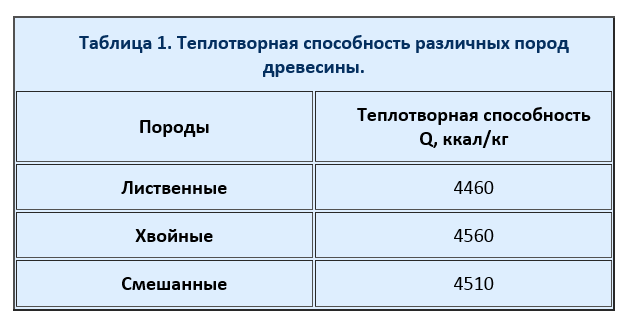

calorific value of various breeds
Differences between breeds in calorific value appear to be minimal. It is worth noting that, based on the table, it may seem that it is more profitable to buy firewood harvested from coniferous wood, because their calorific value is higher. However, on the market, firewood is supplied by volume, not by weight, so there will simply be more of them in one cubic meter of firewood harvested from hardwood.
The amount of firewood for the winter
One of the paradoxes of the universe: the more ordinary and familiar an object of natural origin, the more complex its mathematical description. In order to calculate the volume of a Galaxy or a star, it is enough to remember the school geometry course. If someone really needs to know the exact volume of a log, it is impossible to do without methods of differential calculus. From the astronomer's mistake, the layman is neither hot nor cold; but with an incorrect calculation of fuel reserves for the winter, the cold in the house is ensured.
Everything seems simple: the duration of the heating season in days is multiplied by the area of the house and by the average daily consumption of firewood. Do not believe this simplicity, it is deceiving and requires a lot of clarifications. In fact, it is also necessary to take into account the height of the ceiling, i.e. not area, but volume. The fun begins when it comes to the average daily consumption of firewood. This value depends on the calorific value of the fuel, the efficiency of the stove, climatic conditions, heat loss and many other factors, including the radius of curvature of the hands of the master. The last parameter is an irrational value that can reduce heating efficiency to zero. If you set yourself the goal of deriving a universal formula for an accurate calculation, there will be enough material for more than a dozen theses. It is much faster to make inquiries with neighbors or former owners of the house.
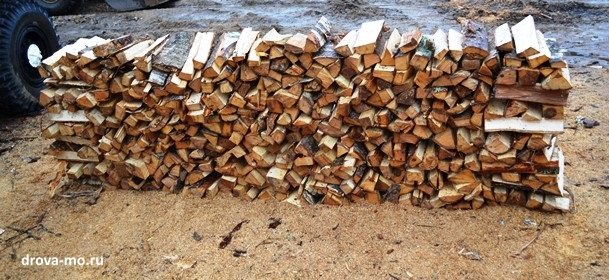

If you plan to install a solid fuel boiler, it is easier to calculate its "appetite" - the main technical characteristics are known. The easiest way to get an approximate figure is using formulas or online calculators posted on specialized sites.
Let's try to calculate.
As a reference, let's take a house with a total area of 150 sq. m and insulated, respectively, SNiP. In the coldest time, about 100 W / m² will be needed to heat the room. Let's take an average energy consumption of 50 W / m². The heating season lasts 7 months (214 days).With continuous heating we get:
150 m² • 50 W / m² • 24 hours • 214 days = 38.52 MW • h, which approximately corresponds to 33 Gcal.
The specific net calorific value of absolutely dry wood is 4440 kcal / kg. With natural drying for about two years, the residual moisture content of the wood is 20%, the specific heat of combustion is 3400 kcal / kg. We will take the efficiency of a solid fuel boiler as 70%.
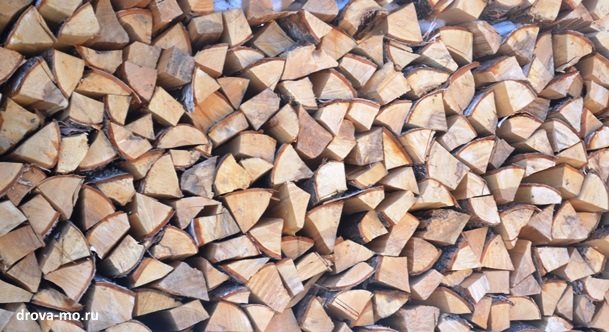

We calculate the required amount of firewood: 33000 kcal • 1000/3400 kcal / kg / 0.7 / 0.730 kg / m³≈19 m³, where 0.730 kg / m³ is the density of oak wood. In terms of maple or birch, the required value is 21.3 m³, for pine - 26.4 m³. In practice, less or more firewood may be needed, depending on the state of the house's insulation and the weather.
All-knowing statistics claim that 4-6 cubic meters of firewood per season is quite enough for heating a small insulated log house in central Russia. The most economically justified stock of firewood for two or three seasons: current + 1-2 next. In this case, you will probably have enough fuel even for the most prolonged cold period. Another reason: firewood, like good alcohol, only gets better over time.
“God have mercy, what kind of wood? We are civilized people, we have gas! " - this position is fundamentally wrong. Firstly, because we were lucky enough to live in the most amazing country in the world. here from time immemorial, two scenarios have been observed: the unlikely and the worst. Secondly, the civilized world is returning to proven and, most importantly, renewable energy sources. Firewood, straw and peat are the same as hundreds of years ago, adjusted for modern technology.
Having a solid fuel boiler and at least a year's supply of firewood in a gasified house is not a whim, but a completely reasonable decision. Optimism is good, but twice as good - optimism backed by strategic reserves.
You can also use our online calculator for calculating the amount of chopped wood for heating a country house, cottage or bathhouse.
Kamaz today
There has been an increase in the volume of sales of cars - dump trucks, it reaches a high level today, however, Kamaz dump truck model 55111 quite harmoniously combines the necessary criteria that allow any buyer to make a decision to buy the necessary truck with a high level of reliability, and a quite acceptable price, excellent performance and excellent quality.
Visually, such a truck resembles a dump truck, the well-established 5511, but it differs greatly in its carrying capacity. The mass of bulk cargo that such a truck can carry is 20 tons. A dump truck with a body volume of 4 cubic meters, will not cope with such a task. Experienced drivers only speak favorably about KamAZ freight transport. The technique was initially highly appreciated due to the 6x4 wheel formula, it has two driving axles, powerful wheel gears, a balancing trolley, plus very comfortable disc wheels equipped with tube tires
The 55111 dump truck is an improved modification of the 5511 machine, the volume of the dump truck is 6.6 cubic meters. As soon as it appeared in 1988, the car immediately became one of the most popular construction machines in the country. It is reliable and practical, very easy to maintain and operate - it has combined the characteristics necessary for working equipment. The main purpose of KamAZ dump trucks is the transportation of bulk cargo of an industrial or construction nature. Kamaz mammoth cars with a body volume of 20 cubic meters (photo below) are actively used in quarries, in the development and extraction of minerals, smaller models are used in construction work and for agricultural needs.
Mammoths are dump trucks, model 6520. They have a large body KAMAZ 6520, have a high carrying capacity - 20 tons, wheel arrangement 6x4. Their total weight reaches 33 tons. Dump trucks "Mammoth" are not updated models of the previous generation (such as KamAZ-65115 or KamAZ-55111), they are a completely new unique development.The KAMAZ 6520 car with a body volume of 20 cubic meters is designed to transport a variety of construction or industrial materials on roads where vehicles with a maximum permissible axle load of 10-13m tons are allowed.
Articulated dump trucks are used when increased cross-country ability and good maneuverability are required. The main design feature of this type of trucks is their equipment with an articulated frame. There are models that have three axles (six driving wheels). An example would be the volume of the body of a Scania dump truck of 22 cubic meters. In addition, in modern models it is possible to turn off the cross-axle differential.
Mining dump trucks (off-road dump trucks) are used where open-pit mining of any minerals is available. Today, the most common is a two-axle rear-wheel drive system, equipped with a rear unloading system. The MAZ dump truck with a body volume of 21 cubic meters and a carrying capacity of 30 tons has also proven itself well in quarrying. In the course of the experiments carried out in quarries with the use of three-axle dump trucks, such a system was found to be extremely inconvenient. For large volumes, Belaz machines can be used, however, such heavy vehicles are completely inapplicable in urban conditions and in rural areas, even more so, but the volume of the MAZ dump truck body allows its use in the city, as a light and medium-tonnage truck.
The use of dump road trains helps to increase the productivity (volume) of transportation in all industrial sectors, and mining is no exception, as well as in agriculture. If you replace a single oil dump truck, the body volume of which does not allow transporting all the cargo in one trip, then the road train will have a big advantage:
Firstly, unnecessary load (overload) on equipment is eliminated, which reduces the risk of increased wear and tear and premature breakdowns
Secondly, the transported volume (and weight) of cargo for one trip increases, which the operating instructions and the volume of the body of a single dump truck will not allow.
The main advantage of low-tonnage KAMAZ vehicles, for example, KAMAZ body volume m3, are relatively small dimensions, which allow you to move around in narrow city streets and narrow roads of gardening associations. The advantage of such special equipment of all models is the simplicity and reliability of the body structure, a good tipping angle of the platform (up to 60 °), excellent visibility from the cab, in addition, stability on the roads, good controllability, and an economical fuel system.
Parameters Kamaz-5320
Onboard tractors KamAZ 5320 with a body volume of 9.8 cubic meters were produced at the Kama Automobile Plant and were intended to work with trailers. The body of the model 5320 is a metal platform with open side and rear walls. The flooring on the floor is wooden; it is envisaged to install an awning with your own hands. The volume of the KamAZ 5320 body allows you to transport containers and goods that exceed the dimensions of the car in height or length (for example, pipes) in compliance with traffic safety rules (SDA)
Answers from experts
Novoe:
1 cart (4 cubes / 4t. Rubles) economy, 2 from the belly. But this is provided that there are no cracks, the winter frames are ideal, the ceiling is insulated, and the Russian stove is in good order.
Rada Simbireva:
! 0 cubic meters meters are enough. This is about 4-5 thousand rubles, depending on the terrain and the presence of forests in the district.
Lyudmila Demina (Malakhova):
Well. and the men went…. Buy a car of firewood and swamp, and then draw conclusions!
INFERNO:
The amount of firewood depends not on the area of the house, but on its volume. with a ceiling height of 2 meters and 2.5, the difference in the volume that needs to be heated is 100 cubic meters, which is decent. In addition, you need to know what material the house is made of, its heat-preserving ability, the characteristics of the heating device (stove or boiler). The price of dlov depends on the type of wood, sawn or chopped. We sell chopped birch from 1200 to 2500 per cubic meter, depending on the degree of remoteness from the city and the number of wealthy homeowners in the district.
Hope R:
If we assume that 6 m3 can be put into a car, then 2 cars are needed for the winter, i.e. 12 m3. Our car costs 6,000 firewood. Yours may be cheaper ...
Elena the beautiful:
If with coal, then 3 cubes will be enough. Machine-5-6 cubic meters costs 5-6 thousand. Tambov region. It depends on what kind of winter there will be, of course.
Zhenyok:
depends on what kind of house, big or small, warm or cold and also on the type of wood, pine burns quickly, gives little heat, aspen is the same, birch is the best choice. I have a five-walled house, the house is closer to a warm one, somewhere you need 1 car (about 5 cubes) of birch firewood, this is a minimum, pine trees so at least two cars
irina gurlova:
Where are you living? We have +5 in winter, and there are places that are colder.
Cyber Phantom:
I wonder how to compare the units "cubic meters" and "by a little"? Apparently you need to know the area of the heated room.
Eugenio DJ:
Depends on how big the stove is. 4-5 cubes are enough.
Tiger:
You need six cubes.
wawan:
365 if you throw it up every night
Antonina Smirnova:
It depends on the winter temperature, the heated area, the quality of the wood and the duration of the heating period. I do not know your data. in Siberia, my mother bought 30 cubic meters of birch firewood. in the Far East, where the winter is much shorter, we bought 15 cubic meters. - considering that we had a farm and had to cook food for animals.
SpecWood -:
There are many parameters to take into account, here's how the calculator:
How many cubes are in the warehouse meter are important parameters in the calculation. Click!
All over the world there are uniform measurement systems: kilograms for determining weight, meters for the size of things, etc.
When harvesting and transporting firewood and forests, cubic meter and warehouse meter measurements are usually used - there is some difference between these values, which not everyone knows about.
What is a cubic meter
As the name implies, a cubic meter or cubic meter (m3) is the volume of a cube whose sides are equal to a meter. This value is usually measured in gas, water, snow, sand and other bulk and liquid materials.
However, this value is only suitable for measuring one whole piece of wood, for example, pine: after all, if you add a cube of separate firewood and boards, there will still be a distance between them, albeit a few millimeters.
Therefore, when buying firewood, boards and other "non-whole" pieces, cubic meters are not suitable: you would have to measure each block from all sides and try to fit them into the given parameters. This is too long and can still lead to errors.
How to count a cube of firewood
To simplify the counting process and reduce the possibility of fraud, another term was coined - stock meter.
It is easiest to imagine it in the form of a woodpile measuring 1 mx 1 mx 1 m, into which the logs were folded, fitting them as tightly as possible to each other. There is still some distance between them - small, but significant when buying a large amount of firewood.
To convert the scadometer to a cubic meter, it is necessary to calculate the dimensions of the stack (length, height and width) and multiply by a special factor indicated in the table below. This will help to get the volume of firewood close to the truth.
The value of the coefficient can be found in special tables and in the photo: they depend on the type of wood, the length of the log and its volume.
For deciduous trees
For conifers
In other words, the shorter the logs, the more space they can take up in the package, while round firewood takes up more volume than chopped firewood.
The easiest way to see the meaning of a warehouse meter is by example:
A pile of thin birch woods 0.75 meters long was purchased. The dimensions of the stack itself were 1.5 meters * 3 meters * 2.5 meters. It is necessary to calculate the total amount of firewood used using a calculator:
- It is necessary to calculate the volume of the stack itself by multiplying its sides: 1.5 * 3 * 2.5 = 11.25 cubic meters. meters;
- Then you need to determine the coefficient of the firewood itself: for birch it is 0.65;
- Both numbers are multiplied again: 11.25 * 0.65 = 7.3125 - this is the specific gravity.
The total difference is almost 4 cubic meters. meters.If it were not for the size of the scadometer, the buyer would have to overpay significantly for the purchase.
Calculation and weight
To calculate the weight of a stack, you need to multiply the number of storage meters by a coefficient, and then check the coincidence of the number using tables that are easy to find on the Internet.
They indicate the approximate weight of 1 cubic meter of different breeds. For example, fresh oak weighs 1000 kg, and with a natural moisture content of 15% - only 710 kg.
Example:
We bought 4 storage meters of dry chopped oak logs 0.25 meters long and 15% moisture. You need to check their weight:
- The ratio of such firewood is 0.76: 0.76 * 4 = 3.04 cubic meters. meters;
- 3.04 * 710 kg = 2158.4 kg - this is approximately how much the purchased firewood should weigh. If the difference is unduly deviated in one direction, then the seller is trying to cheat.
Note: When buying a tree, it is important to know not only its volume, but also its weight: if stored improperly, the tree can swell and become much heavier than it was, but the buyer will still have to pay for this.
If the tree was brought in the back of a car, for example, a Gazelle or a dump truck, not in a woodpile, but having thrown it somehow, it is necessary to multiply the volume of the body by 0.8 with a log length of 0.25 meters and by 0.75 with a length of 0, 5 meters. These are the average values of the occupied air for such a installation.
How to calculate the cubic capacity, see an example of calculation in the following video:
6sotok-dom.com
Resolution of the Head of the Novopokrovsky rural settlement of the Novopokrovsky district of 04.02.2009 N 10
The text of the legal act as of August 2012
In accordance with the Decree of the Government of the Russian Federation of May 23, 2006 N 306, taking into account the calorific value of the fuel, I decide:
1. To approve the standards for solid fuel consumption per month during the heating period: coal - 8.5 kg / sq.m, firewood - 0.025 cubic meters / sq.m.
2. Control over the implementation of this Resolution shall be entrusted to the deputy head of the Novopokrovskoe rural settlement for the improvement of N.P. Koval.
3. The resolution comes into force from the day of its official publication.
Head of Novopokrovsky rural settlement M. I. Grechushkin
Appendix to the Resolution of the head of the Novopokrovsky rural settlement of February 4, 2009 N 10
SOLID FUEL CONSUMPTION REGULATIONS
—— + ———————- + —————— + ——————- ¦ N ¦ Indicator ¦ Per month ¦ In heating ¦ ¦ ¦ ¦ heating ¦period (based on ¦ ¦ ¦ period ¦ 6 months) ¦ + —- + ————————- + —————— + —————— + ¦ 1. ¦ Coal supply rate ¦ 8.5 kg / sq.m ¦ 51 kg / sq.m ¦ + —- + ———————- + —————— + —————— + ¦ 2. ¦Firewood supply rate ¦0.025 cubic meters / sq.m ¦ 0.15 cubic meters / sq.m ¦ —— + ———————- + —————— + ——————-
To calculate the rate of heat consumption per 1 sq. M of total area, the Decree of the Government of the Russian Federation of May 23, 2006 N 306 (formula 2) was applied, taking into account the calorific value of the fuel.
The methodological instructions of the State Unitary Enterprise of the Academy of Public Utilities named after V.I. K. D. Panfilov (2002, edition 4).
The formula for determining the heating standard (formula 2) (coal)
Heating standard (Gcal per 1 sq.m. per month) is determined by the formula:
Qо Qо No = ——- = —— x 2 = 0.0375 Gcal / m2 (heating period), S x 12 S x 12
Where:
Qо is the total consumption of heat energy for heating residential premises of an apartment building or residential building, defined as the sum of readings of collective metering devices for the heating period (Gcal) (for 12 households it is 91746.6 Gcal);
S is the total area of residential premises of an apartment building or premises of a residential building (sq. M) (for 12 households it is 408,282 sq. M.).
P = N x S (Gcal / month).
The average value of the calorie equivalent for converting natural fuel into the conventional one for the coal of the Donetsk Basin is 0.94.
P x 213.2 A = ————, kg (per month / sq.m), 0.94
where 213.2 - Donetsk coal (production of 1 Gcal of heat, kg of fuel equivalent);
0.94 is the equivalent of converting natural fuel into conventional fuel and vice versa.
Necessary costs of heat energy for the heating period:
tвн - tсро Qо = G x ———— x Т (Gcal / heating.period), tвн - tо
where G is the total heat load for heating residential buildings (heating period) (for 12 households it is 54258400);
tвн - internal air temperature of heated living quarters (18 ° C);
tro is the design temperature of the outside air for design purposes (for Novopokrovskaya -22 ° C);
tсро - average monthly temperature for the heating period (2.57 ° C);
T - hours during the heating season (4392).
8.5 x 6 = 51 kg / sq.m.
To calculate the rate of firewood consumption for heating residential households, due to the lack of individual rates, fuel consumption rates in kg of standard fuel are taken.
Wood volume calculation table: GOST, measurement method
The very method of calculating the volume of a round log, board or bar is simple, reduced to a mathematical problem of 5-6 grade. But in reality, everything is much more complicated: conical logs, boards are often measured in inches, the timber has chamfers, there are other subtleties and differences of real wood products. Therefore, tables are so convenient, which summarize the data on measuring the cubic capacity of the forest, taking into account such form errors as the taper of the logs, the presence of bark, escaping, the complexity of the shape of the slab and plate and other nuances.
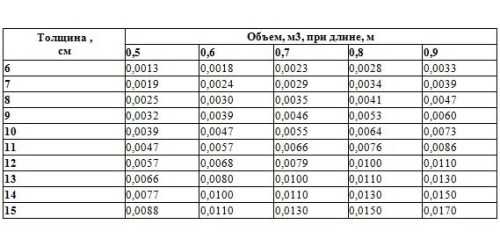

Figure 1. Table for calculating the cubic capacity of edged sawn timber.
Tables of round timber volumes in accordance with GOST 2708-75
The most common, accurate and verified table for determining the volume of round timber is the one given in the official document, GOST 2708-75, without a validity period.
It contains data on the volume of round wood, diameter from 3 to 120 cm, length from 1 to 9.5 m, with a step in diameter of 1-2, and along the length - 10 cm.Additionally, specialized standard sizes of round logs are shown: 0.5-0.9 m and 10-13.5 m, and 6-15 cm and 8-38 cm thick, respectively. Their volumes have also been calculated. There are even more specific sizes.
Tab. 1. Cubic capacity of round wood 6-60 cm thick, 1-9 m long
| Thickness (diameter), cm | |||||||||
| 1,0 | 2,0 | 3,0 | 4,0 | 5,0 | 6,0 | 7,0 | 8,0 | 9,0 | |
| 6 | 0,0032 | 0,0073 | 0,0120 | 0,017 | 0,022 | 0,028 | 0,037 | 0,047 | 0,056 |
| 8 | 0,0053 | 0,0110 | 0,0170 | 0,026 | 0,035 | 0,045 | 0,057 | 0,071 | 0,084 |
| 10 | 0,0082 | 0,0170 | 0,026 | 0,037 | 0,051 | 0,065 | 0,082 | 0,100 | 0,122 |
| 12 | 0,0120 | 0,026 | 0,038 | 0,053 | 0,073 | 0,093 | 0,114 | 0,120 | 0,140 |
| 14 | 0,0160 | 0,035 | 0,052 | 0,073 | 0,097 | 0,123 | 0,150 | 0,179 | 0,21 |
| 16 | 0,0210 | 0,044 | 0,069 | 0,095 | 0,124 | 0,155 | 0,189 | 0,22 | 0,26 |
| 18 | 0,0270 | 0,056 | 0,086 | 0,120 | 0,156 | 0,194 | 0,23 | 0,28 | 0,32 |
| 20 | 0,0330 | 0,069 | 0,107 | 0,147 | 0,190 | 0,23 | 0,28 | 0,33 | 0,39 |
| 22 | 0,0400 | 0,084 | 0,130 | 0,178 | 0,23 | 0,28 | 0,34 | 0,40 | 0,46 |
| 24 | 0,0480 | 0,103 | 0,157 | 0,21 | 0,27 | 0,33 | 0,40 | 0,47 | 0,55 |
| 26 | 0,0570 | 0,123 | 0,185 | 0,25 | 0,32 | 0,39 | 0,46 | 0,54 | 0,63 |
| 28 | 0,0670 | 0,144 | 0,220 | 0,29 | 0,37 | 0,45 | 0,53 | 0,63 | 0,72 |
| 30 | 0,0770 | 0,165 | 0,250 | 0,33 | 0,42 | 0,52 | 0,61 | 0,72 | 0,83 |
| 32 | 0,0870 | 0,190 | 0,28 | 0,38 | 0,48 | 0,59 | 0,70 | 0,82 | 0,94 |
| 34 | 0,10 | 0,210 | 0,32 | 0,43 | 0,54 | 0,66 | 0,78 | 0,92 | 1,06 |
| 36 | 0,11 | 0,230 | 0,36 | 0,48 | 0,60 | 0,74 | 0,88 | 1,02 | 1,18 |
| 38 | 0,12 | 0,260 | 0,39 | 0,53 | 0,67 | 0,82 | 0,97 | 1,13 | 1,30 |
| 40 | 0,14 | 0,28 | 0,43 | 0,58 | 0,74 | 0,90 | 1,07 | 1,25 | 1,44 |
| 42 | 0,15 | 0,31 | 0,47 | 0,64 | 0,81 | 1,00 | 1,18 | 1,38 | 1,58 |
| 44 | 0,16 | 0,34 | 0,52 | 0,70 | 0,89 | 1,09 | 1,30 | 1,51 | 1,73 |
| 46 | 0,18 | 0,37 | 0,57 | 0,77 | 0,98 | 1,19 | 1,41 | 1,65 | 1,90 |
| 48 | 0,19 | 0,41 | 0,62 | 0,84 | 1,06 | 1,30 | 1,54 | 1,80 | 2,07 |
| 50 | 0,21 | 0,44 | 0,67 | 0,91 | 1,15 | 1,41 | 1,67 | 1,95 | 2,26 |
| 52 | 0,23 | 0,48 | 0,73 | 0,99 | 1,25 | 1,53 | 1,81 | 2,12 | 2,45 |
| 54 | 0,25 | 0,53 | 0,80 | 1,07 | 1,35 | 1,65 | 1,96 | 2,29 | 2,63 |
| 56 | 0,27 | 0,57 | 0,86 | 1,16 | 1,46 | 1,78 | 2,11 | 2,46 | 2,83 |
| 58 | 0,29 | 0,61 | 0,92 | 1,25 | 1,57 | 1,91 | 2,27 | 2,63 | 3,03 |
| 60 | 0,31 | 0,66 | 0,99 | 1,33 | 1,68 | 2,05 | 2,42 | 2,81 | 3,23 |
This is a frequently used part of the table. Small graduation of the sizes of logs and cubic capacity allows using it both in industry and private individuals. Therefore, this table can be called universal. On its basis, a variety of techniques have been developed, for example, measuring standing timber in forestry, edging in transport at customs posts, and others (Fig. 1).
Back to the table of contents
Carriage: what is it? Determination of pine density. Dovetail: mount. More >>
Working with ready-made calculations of cubic capacity
Of course, not all standard sizes are given here, but for example, it can be seen that the cubic capacity of various logs has been calculated with great accuracy. In practice, the thickness (diameter) is measured, as indicated in GOST, then the length and cubic capacity is found from the table. Since the circumference of the cut of the log is not ideal in shape, 2 measurements of the diameter are carried out perpendicularly and its average value is found. It is this value that needs to be searched for in the string.
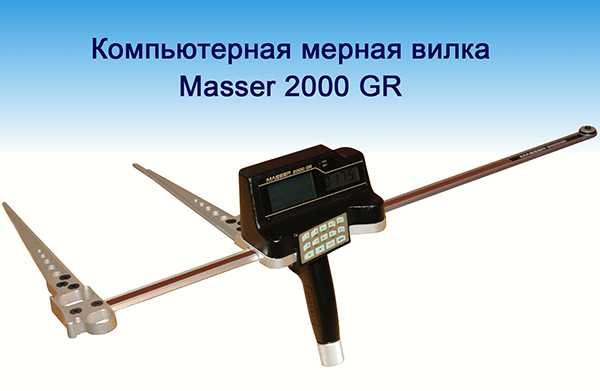

Figure 2. Using a caliper, you can measure the diameter and calculate the cubic capacity of the tree.
Example. A 6-meter log in the upper cut has 2 diameters (30 and 34 cm excluding bark), measured perpendicularly. We find the average value of the cut diameter of 32 cm. The length of the log is 6 m. From the table we find that at the intersection of a row with a value of 32 cm and a column of 6 m there is a volume value of 0.59 m³. If the log is rounded, then just one measurement of the diameter is enough. The error in the results is 2-4%, which is acceptable for most practical calculations.
When logging for a home, each log can be measured, but there is not always enough time and effort for this. Here, an industrial method of calculating the cubic capacity is used. The timber is sorted by length and then by equal upper diameters. Measurement is made in each group of one product.
And only after stacking or in a car, the quantity is counted and the total cubic capacity is calculated by simply multiplying the number of logs by the volume of one of them.
Scheme for determining the diameter of the upper end.
In the forestry industry, for taxation (determination of the commodity stock of standing timber), in addition to simple tools, there are special electronic devices for measuring and calculating the parameters of standing trees.
Masser 2000 is a computerized measuring fork that allows not only to accurately measure the control diameter of a standing tree at a height of 1.3 m, but also to immediately determine the cubic capacity, taking into account the type, height and crown of the tree. Then the device outputs all the collected information to the computer (Fig. 2).
Back to the table of contents
We buy firewood
Which firewood is more profitable to buy: chopped or round? loose or stacked? We propose to understand this issue and save a lot, especially if firewood is the main fuel for heating the house.
Firewood is sold, as a rule, in cubic meters. But, oddly enough, the cube is not the cube. And this difference is palpable. Let's start with the fact that the cubic meter of firewood that we buy is far from the true cubic meter. You have to pay not only for wood, but also for air in the literal sense of the word, because it is impossible to lay firewood without the formation of voids between them. Therefore, we purchase the so-called foldable cubic meter, if the firewood is delivered folded, or in bulk, if the firewood is heaped in bulk.
To understand how many folded cubic meters will come out of bulk, you need to multiply the volume of firewood by 0.8. The indicator will, of course, be approximate, because a lot depends on the size of the logs, and it is impossible to calculate how tightly the firewood will settle. And yet, firewood from a bulk cubic meter will turn out to be less by weight by about 20%.
But what kind of firewood is more profitable to buy - chopped or round?
At first glance, the answer is obvious: chopped firewood is smaller, therefore, it is stacked denser - and there will be more folded cubic meters. But here's the catch. Conduct an experiment: chop a few logs - and the volume of the woodpile will increase. This is noticeable even with the most accurate stacking of firewood. A natural question arises: will the seller spend time and resources on such a dense loading? Never! This means that the losses will be greater.
To fix the difference between the cube of chopped and non-chopped firewood, GOST introduced the coefficients of full wood, which establish the dependence of the volume of firewood and the full cube of wood. This means that it is enough to carry out simple calculations. It is necessary to multiply the volume of wood by the coefficient of full wood. This indicator depends on the length, size and type of logs or chocks. To determine the exact value of the coefficient, we suggest using the following table.
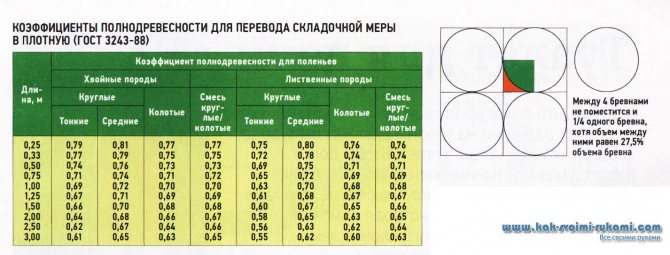

The table shows that 0.8 m3 of real wood comes out of one cubic meter of average deciduous logs with a length of 0.25 m. From chopped logs with the same indicators, you get 0.76 m3. The difference from each cubic meter is 0.04 m3.
By the way!
The GOST coefficients are valid for the most dense stacking of chopped firewood. If the firewood in the brought woodpile is laid with a well, supposedly for better drying, then you are being led by the nose - ask for a new measurement of the volume of firewood.
Speaking about the benefits of certain firewood, one cannot ignore their cost. The pricing principles of sellers may differ, but there are still some average indicators. Stacked chopped firewood is more expensive than the rest. Their average price is 1,500 rubles. for 1 m3. Chopped firewood in bulk will cost about 100 rubles cheaper. The stacked logs will cost the same. A cubic meter of churbaks in bulk will cost about 1,300 rubles. for 1 m 3.
What kind of firewood to choose
The smallest amount of firewood will be obtained when ordering chopped firewood in bulk. For clarity, we calculate the value of the fold measure from the bulk, and then calculate the true volume of firewood, taking the already familiar indicator 0.76 as the fullness coefficient.
So, we get: 1 m 3 x 0.8 * 0.76 = 0.6 m 3
That is, ordering a bulk cube of chopped firewood, in its pure form we get a little more than half a cube of wood for about 1,400 rubles. A full-timber cube in this case will cost 2,333 rubles.
Buying a bulk cubic meter of logs, following the same calculations and using the full wood ratio for non-chopped firewood, we get 0.64 cubic meters of real wood for 1300 rubles. Here the cost of a full-timber cube is 2,031 rubles.
From the purchased cube of folded chopped firewood will come out about 0.76 m 3 worth 1,500 rubles. Total: RUB 1,973 for a full-wood measure.
From a similar volume of folded logs (uncut firewood), you get 0.8 m 3 of real wood. At a cost of approximately 1,400 rubles. a full-wood cube will cost 1,750 rubles.
You can save money if you chop wood yourself. If you use hired labor, then you will have to add the cost of work, but you need to add not to the final price of a full timber cube, but to the cost of the purchased cubic meter. By the way, after chopping wood there will be a nice bonus - wood chips, which are sold for 100 rubles. per bag.
How to calculate one cubic meter of firewood: stacked, in bulk and in nets
How to calculate one cubic meter of firewood: stacked, in bulk and in nets
Surely every person who at least once ordered firewood wondered if the suppliers had cheated him? How to determine exactly how much firewood they brought you? Perhaps you have come across a villager or an experienced forestry worker who, from one meaningful glance at a pile of firewood, said an almost correct result. In fact, there is nothing difficult in determining the volume of firewood, and this can be done both by eye, with due experience, and with high accuracy, using the calculation method. Let's dwell on it in more detail.
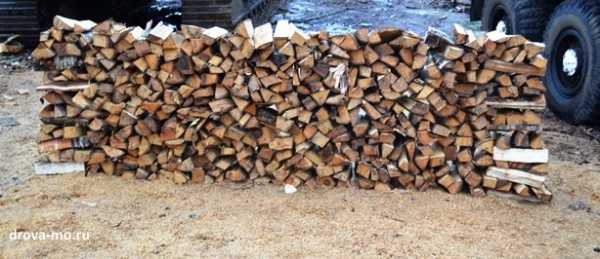

The first thing you need to pay attention to when preparing for the calculation is the type of stacking of firewood. Let's start with the most common - in bulk. In this case, the firewood is thrown into the body or a pile; at first glance, it is rather difficult to estimate the volume, because the logs are not dense. First, you need to calculate the total amount of imported firewood. For this purpose, it is necessary to measure the piled firewood. If you have a cone-shaped pile, then we find out its diameter and height, if the firewood is in the body, we measure the length, height and width, it is better to level the slide first, for more accurate calculations. Having calculated the volume, you should translate it into storage meters, for this we use the coefficients. Usually, an average of 0.7 is taken, since this number is used in further calculations, but if an accurate calculation is required, the normative document GOST 3243-88 should be used. It indicates the exact coefficients, which depend on the type of wood, its condition, the length and thickness of the logs.
Now we know how many cubic meters they brought to us, but we ordered cubic meters, which means solid wood without gaps. On average, one fold meter is considered to be equal to 0.7 cubic meters of solid wood. It is this coefficient that is used in most cases, although for accurate calculations, you should return to the translation table set out in GOST 3243-88.
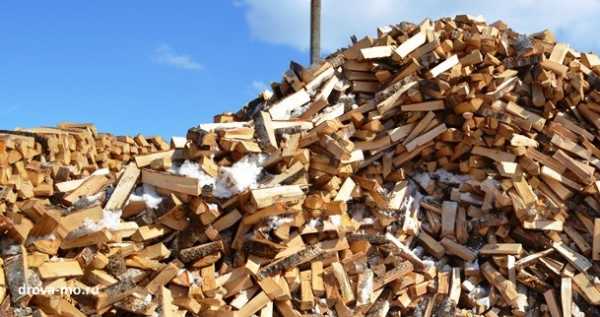

Another popular method of delivering firewood is in nets or stacked in rows. In this case, it is quite easy to determine the amount of imported cubic meters. We do not have to convert the bulk volume to the storage one, the only thing that needs to be done is to measure the woodpile, calculate the volume, and then use the coefficient already known to you to make calculations.
As you can see, there is nothing complicated in the calculations. To accurately determine the number of cubic meters, it is enough just to find out the volume of brought firewood, convert it to fold meters, and then, using the coefficient, find out the number of cubes.
And if you are interested in the weight of firewood, then after reading our article, you will know those many parameters that need to be taken into account when calculating the mass of wood: How much does firewood weigh?
We work without cheating! We always bring the exact amount of firewood ordered by you!
It's very easy to order firewood in Moscow and the Moscow region!
drova-mo.ru
Void volume
What is the most common way to carry firewood? That's right, on old Russian-made trucks. And we know something about them. The volume of the body of the "53rd" "lawn" - 4.8 cubic meters. m. There is also a "collective farm" modification with high sides, then the volume increases almost 2 times. The amount of firewood in the box also depends on how they are stacked. But tell me, have you ever brought neatly stacked firewood to anyone?
In the back, they almost always lie in bulk. Well, accordingly, the empty space between the logs is also in bulk. However, there is nothing insurmountable for science in this ugly heap. because there is a special coefficient for converting the bulk volume into the volume of stored cubic meters. And it depends on the length of the log.
For example, for a log of 1/4 m, the correction factor is 0.8. And for a log of 3/4 m - already 0.73. What does this wisdom mean for those who are not very strong in mathematics? And the fact that 4 cubic meters of firewood with an average length of 25 cm, brought in bulk, after laying will turn into 3.2 cubic meters.

